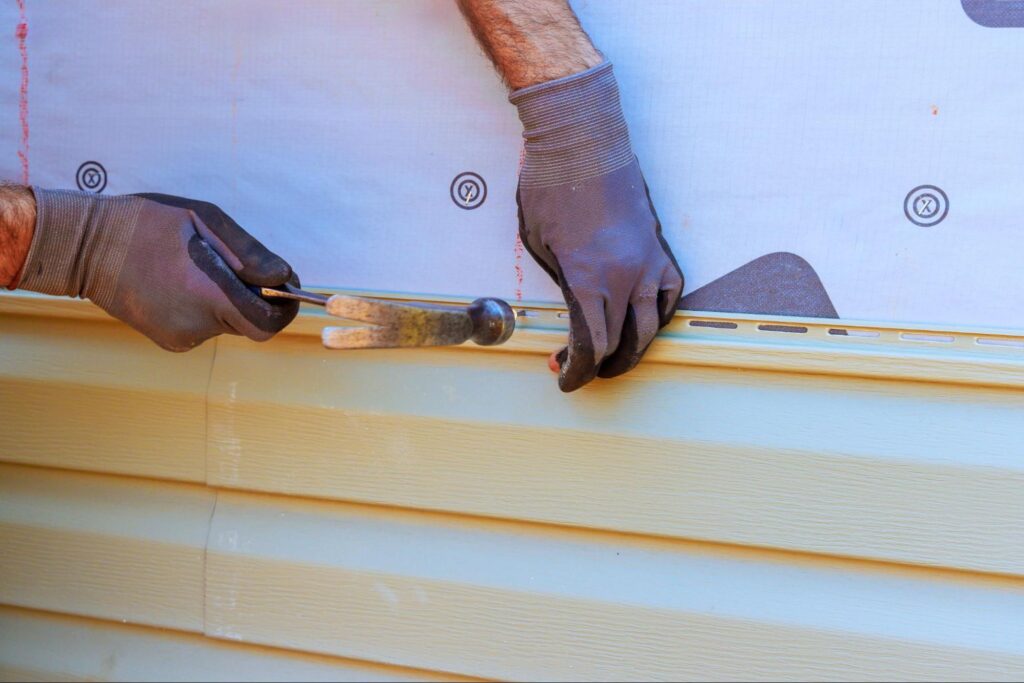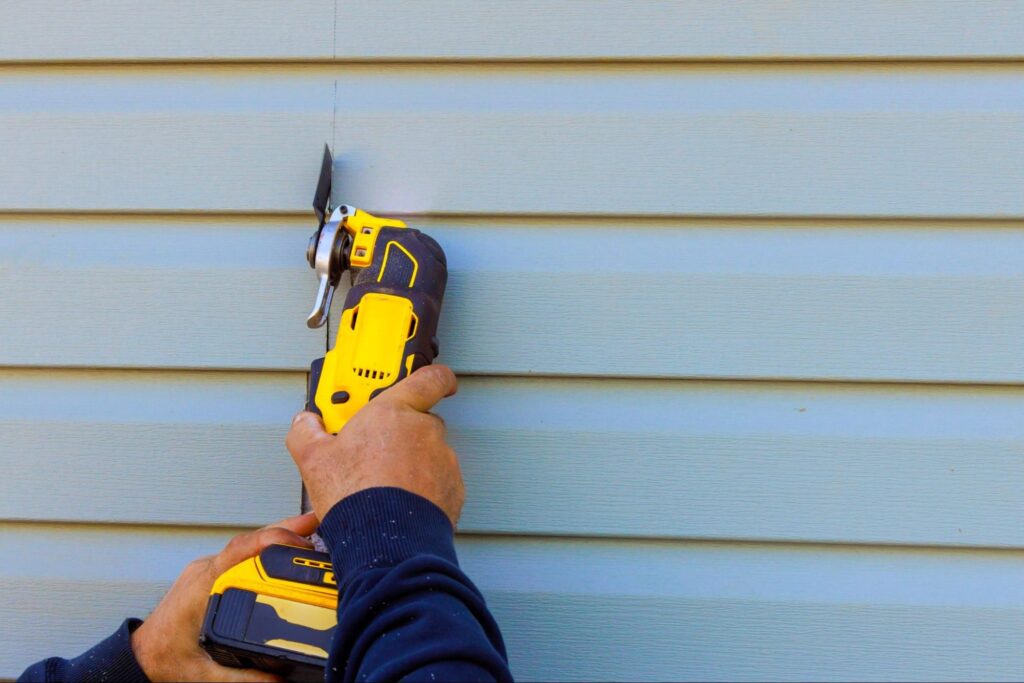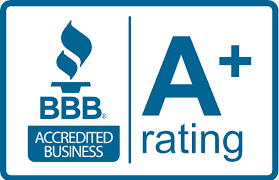
Vinyl siding wears down, fades, and cracks over time. When it does, replacing it becomes less about curb appeal and more about protection. Homeowners often hesitate because the costs feel unclear or unpredictable. However, avoiding the project can lead to worse problems hiding beneath the surface. Knowing what drives the cost to replace vinyl siding helps you plan smarter, spend wiser, and avoid unpleasant surprises.
What is the Average Cost to Replace Vinyl Siding?
The average cost to replace vinyl siding ranges from $6,000 to $16,000, depending on the home’s size, material quality, and location. Replacing vinyl siding is a major exterior upgrade, both visually and financially. Costs vary depending on where you live, your home’s square footage, and labor rates. Understanding the typical price range is essential to avoid being overcharged or underprepared.
National Cost Range and Per Square Foot Pricing
Vinyl siding replacement typically costs between $ 6000 and $ 16000, though prices can shift depending on local market conditions. That translates to an average of two dollars and fifty cents to ten dollars per square foot installed. Several factors, including material grade, local labor, and home design complexity, affect this range. Basic siding in standard colors is more affordable. Insulated or textured panels, on the other hand, increase the total cost. These national estimates may vary depending on your region, contractor availability, and project timing.
How Much Does Siding Cost by Home Size?
Home size and wall surface area significantly impact overall siding cost. A 1,200-square-foot ranch-style home typically costs around $7,000 to re-side. A two-story house with more wall surface often ranges between $10,000 and $15,000. Depending on layout and design, custom or multi-level homes generally start at $15,000 and may exceed that. Homes with architectural features like dormers or wrap-around porches require additional material and labor. Similarly, houses with aging or damaged exteriors may need extra prep, which raises the final cost. These estimates are subject to change and can vary by region, contractor, and market conditions.
Labor vs. Material Costs in Vinyl Siding Jobs
Materials comprise 40% to 60% of the total cost in most vinyl siding projects. The rest is labor. Experienced siding contractors may charge higher hourly rates, but their efficiency can reduce total installation time. Basic horizontal panels install quickly, keeping labor costs low. However, specialty siding like board-and-batten or shakes takes longer and drives up labor fees.
What Affects the Cost to Replace Vinyl Siding?
Several factors impact the total cost to replace vinyl siding, including material quality, home design, labor, and removal of old siding. Every house has unique challenges that can shift pricing well above or below the average. Understanding what drives these differences helps you prepare, budget, and compare contractor estimates more effectively.
Type and Quality of Vinyl Siding
The grade of vinyl you choose plays a significant role in your project’s total cost. Thinner, entry-level panels are more affordable but less durable and may fade faster. Mid-grade vinyl balances price and performance, often with improved insulation and impact resistance. Premium vinyl siding includes foam backing, textured finishes, or enhanced UV protection. These high-end options cost more upfront but can reduce long-term maintenance and energy bills.
House Design and Accessibility
Simple, single-level homes with flat walls are typically the least expensive to side. More complex structures, such as multi-story houses, homes with steep slopes, or properties with tight access, require more labor and equipment. Contractors may need scaffolding, ladders, or lifts to reach upper levels, especially in narrow spaces. Homes with curved walls, gables, or intricate trim details also demand more precise installation. These challenges translate into higher labor fees and extended project timelines.
Local Labor Rates and Seasonal Demand
Labor costs for vinyl siding installation vary depending on your location and the time of year. Urban areas have higher rates due to contractor demand, higher overhead, and limited availability. Rural areas might offer lower hourly rates, but the number of qualified installers may be limited. During peak seasons like spring and fall, siding contractors are busier, and prices often reflect that demand. If you’re flexible, scheduling during off-peak months can help reduce your quote.

Old Siding Removal and Disposal Fees
Tearing off old siding is a common but sometimes overlooked cost. Contractors may charge per square foot to remove existing materials, especially if multiple layers or damage are involved. Disposal fees also vary depending on your region and local landfill policies. If your home has asbestos siding, removal will require special handling and additional costs. Your contractor may not include these charges in their estimate, so always clarify what’s covered.
How Does Vinyl Siding Compare to Other Materials?
Vinyl siding remains one of the most cost-effective and low-maintenance exterior cladding options. While several alternatives exist, each comes with its balance of cost, durability, and upkeep. Comparing materials helps homeowners make informed decisions based on long-term value.
Vinyl vs. Fiber Cement Siding
Fiber cement siding is heavier and more impact-resistant than vinyl. It holds up well to fire, wind, and pests, making it a durable choice for many climates. However, it typically costs more to install, both in materials and labor, due to its weight and handling requirements. While fiber cement can last longer, it may need repainting over time, adding to maintenance costs. Vinyl, by contrast, is lighter, easier to install, and doesn’t require painting, making it more affordable upfront and over time.
Vinyl vs. Wood and Engineered Wood
Traditional wood siding has a natural aesthetic, but it comes with higher maintenance demands. It needs regular sealing or painting and is more vulnerable to moisture and pests. Engineered wood offers improved resistance and durability, but still requires upkeep and can be prone to swelling. Vinyl, on the other hand, is resistant to rot, insects, and fading. While wood may appeal to homeowners seeking a rustic or high-end finish, vinyl is often chosen for its simplicity, longevity, and lower lifetime cost.
Why Vinyl Remains a Popular Choice
Vinyl siding continues to dominate the market because it offers durability, affordability, and style flexibility. It comes in various profiles and colors, including options that mimic woodgrain and other textures. Modern vinyl products also include insulation and UV protection, increasing performance and energy efficiency. Homeowners appreciate that it requires little to no maintenance. For many, vinyl offers the best appearance, performance, and price balance.
What Extra Costs Come With Replacing Vinyl Siding?
Beyond materials and labor, several additional expenses can increase the total siding replacement cost. These extras may not appear in your contractor’s base estimate, so identifying them early helps you stay within budget. The following items are commonly overlooked but can affect your final invoice.
Insulation and Weather Barrier Upgrades
Adding house wrap or foam board insulation beneath your new siding improves your home’s energy efficiency. These materials create a barrier against air leaks and moisture. While not always required, they’re highly recommended for older homes or colder climates. House wrap and foam insulation costs typically range from fifteen cents to one dollar and fifty cents per square foot. Many contractors offer these upgrades as part of a bundled weatherproofing package.
Structural Repairs and Hidden Damage
Old siding can hide water damage, rotting sheathing, or insect issues. Contractors often uncover damaged areas that need repair after removing the old siding. Fixing these issues is essential for long-term performance and safety. Depending on the extent of the damage, repairs can cost anywhere from a few hundred to several thousand dollars. It’s wise to build a ten to fifteen percent buffer into your budget to handle these surprises.
Permits, Inspections, and Local Requirements
Permit and inspection requirements vary by region. Some areas require permits for siding replacement, while others may not. If needed, permit fees typically range from $100 to $500 or more, depending on location and project size. Inspections may also be required at various stages of the job. These are not fixed costs; thus, you must check local codes and confirm whether your contractor will manage them.
Trim, Soffit, and Gutter Adjustments
Installing new siding often leads to updates on other exterior features. You may need to replace fascia, soffits, or exterior trim for a cohesive look and better moisture protection. Gutter systems may also require removal and reattachment, or complete replacement if damaged. While optional in some cases, these components finish the project visually and functionally. Their costs depend on materials and the amount of linear footage involved.

How Can You Save on the Cost to Replace Vinyl Siding?
There are practical ways to cut costs when replacing vinyl siding without sacrificing quality. You can complete your siding project on budget with careful planning and wise choices. The tips below offer actionable ways to reduce expenses and increase value.
Timing the Project for Better Rates
Contractors are usually busiest in spring and fall. Scheduling your siding replacement during the off-season, such as late winter or mid-summer, may result in lower bids and a quicker turnaround. Demand is lower during these periods, and contractors are often more flexible with pricing. Just be sure that weather conditions still allow for proper installation. Being flexible with your timeline can help you secure better value.
Choosing Standard Profiles and Colors
Standard vinyl siding styles and colors are more affordable and readily available. Custom textures, bold colors, or nontraditional profiles often cost more and may delay your project. Sticking to widely available options can avoid special-order fees and installation delays. Double-four-lap siding in neutral colors is usually the most budget-friendly. You can use the savings to invest in better insulation or upgraded trim.
Bundling With Other Exterior Projects
If you plan to replace windows, roofing, or gutters, consider bundling them with your siding project. Contractors often provide discounts when completing multiple exterior jobs at once. It also reduces labor overlap, project duration, and setup costs. Additionally, bundling creates a unified look and ensures all components are correctly installed to function as one system. Ask contractors if they offer multi-service packages or seasonal deals.
Getting and Comparing Multiple Quotes
One of the most effective ways to save is to gather three to five detailed estimates. Ensure each quote breaks down labor, materials, removal, and cleanup separately. Look for discrepancies that could signal missing services or inflated pricing. Choose contractors licensed, insured, and experienced in siding installations specific to your area. Comparing bids helps you avoid overpaying and gives you leverage when negotiating.
How to Budget for a Vinyl Siding Replacement Project
A well-structured budget makes your siding project more manageable and prevents cost overruns. Knowing your numbers gives you a clear financial path, from calculating square footage to planning for hidden expenses. The following steps will help you build a realistic and flexible budget.
Estimating the Full Project Scope
Start by measuring your home’s total wall surface area and multiplying it by the expected cost per square foot. Then, factor in upgrades, old siding removal, insulation, and trim. If your home has complex architecture, add ten percent for cut waste and detail work. Request itemized estimates instead of lump sums to identify where your money is going. This clarity helps prevent miscommunication and unexpected charges.
Planning for Contingencies
Unexpected costs can quickly derail a project. Set aside ten to fifteen percent of your budget for repairs, weather delays, or material shortages. Even minor issues like replacing flashing or fixing rotten wood can add up quickly. Having a cushion allows you to stay on track without cutting corners elsewhere. If unused, that buffer stays in your pocket.
Financing Options and Payment Flexibility
Some contractors offer in-house financing or partnerships with third-party lenders. These options spread out payments and make large projects more accessible. Home equity loans, HELOCs, or personal loans can fund siding replacements. Before committing, compare rates, fees, and early payoff rules. Always read the fine print and ask for written terms.
What to Ask Before Hiring a Contractor
Before signing a contract, ask specific questions to ensure the contractor meets your expectations. Confirm licensing and insurance, request references, and request proof of recent similar projects. Find out what’s included, such as tear-off, cleanup, permits, and inspections. Ask for a timeline and payment milestones in writing. A reputable contractor will be transparent and responsive to all questions.
Replace Vinyl Siding Before Damage Costs You More
Every season you delay vinyl siding replacement increases your risk of water damage, structural issues, and rising repair costs. Cracks, warping, or fading may seem cosmetic now, but they can signal deeper problems. Acting while prices are within reach helps avoid inflation, labor shortages, and costly repairs. If your home’s exterior shows signs of wear, now is the time to start planning. Get quotes, build your budget, and take the next step before minor issues become major headaches.
Don’t stop here. Visit the Faircloth Roofing, Inc. blog for practical insights to help you confidently protect and upgrade your home.






